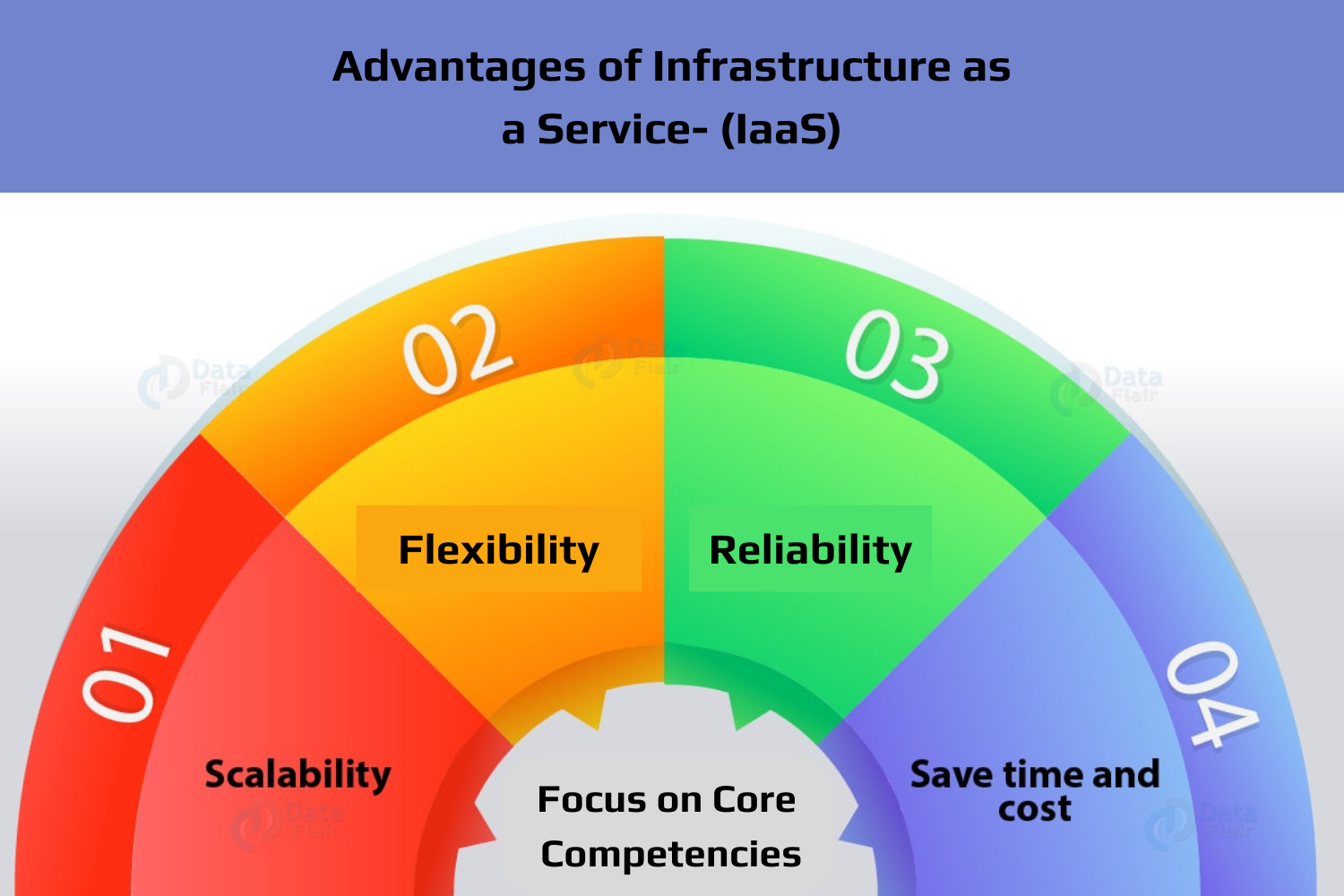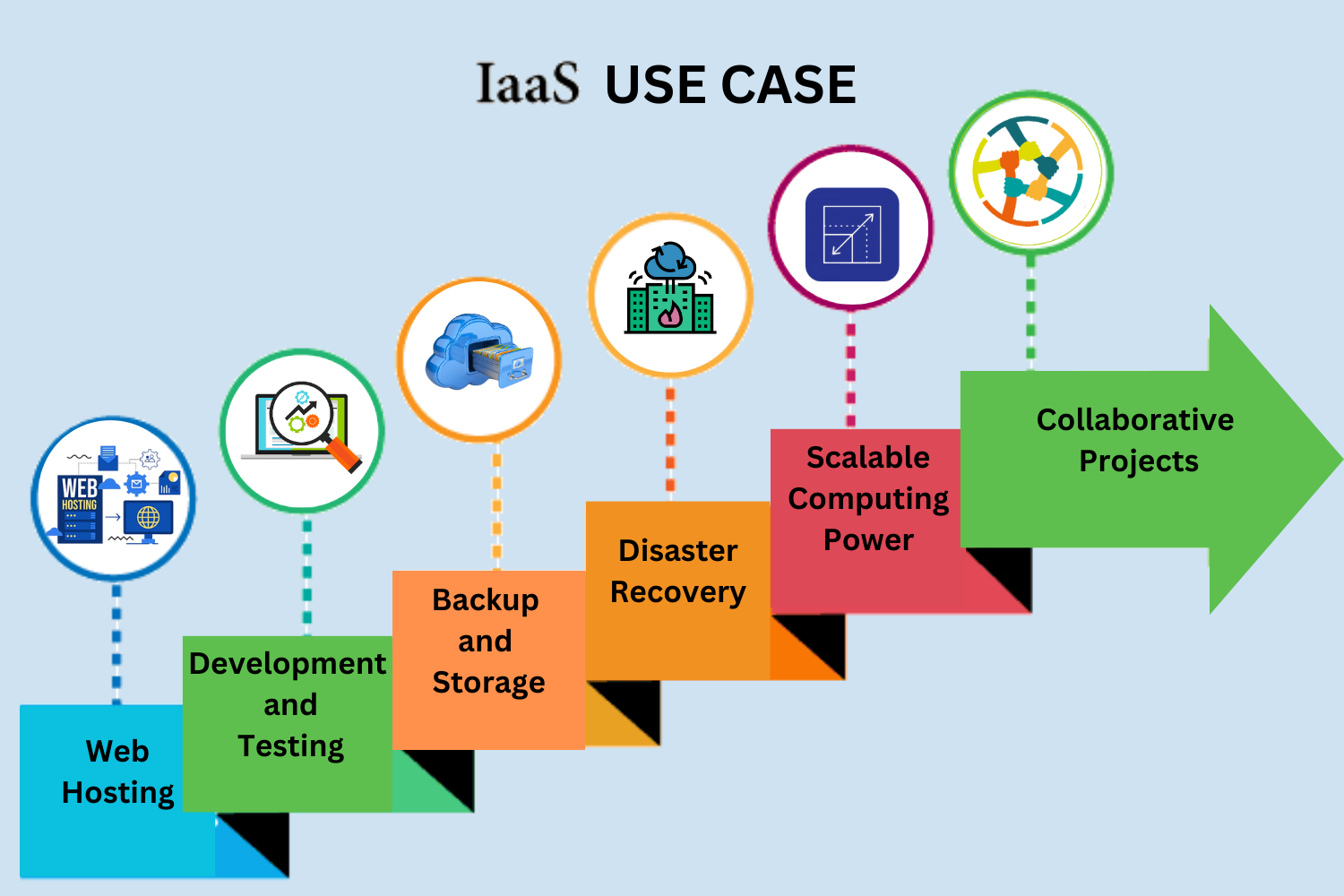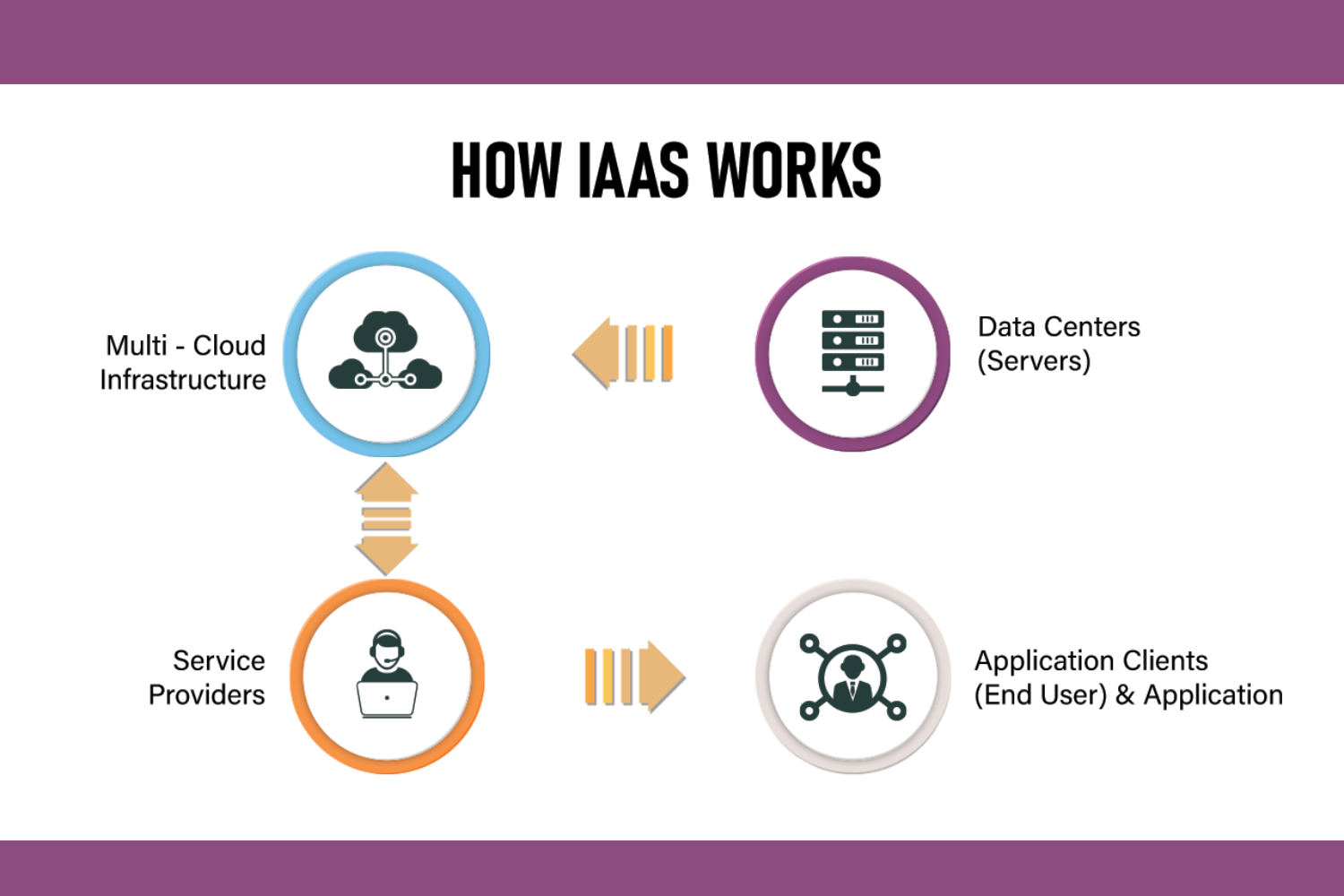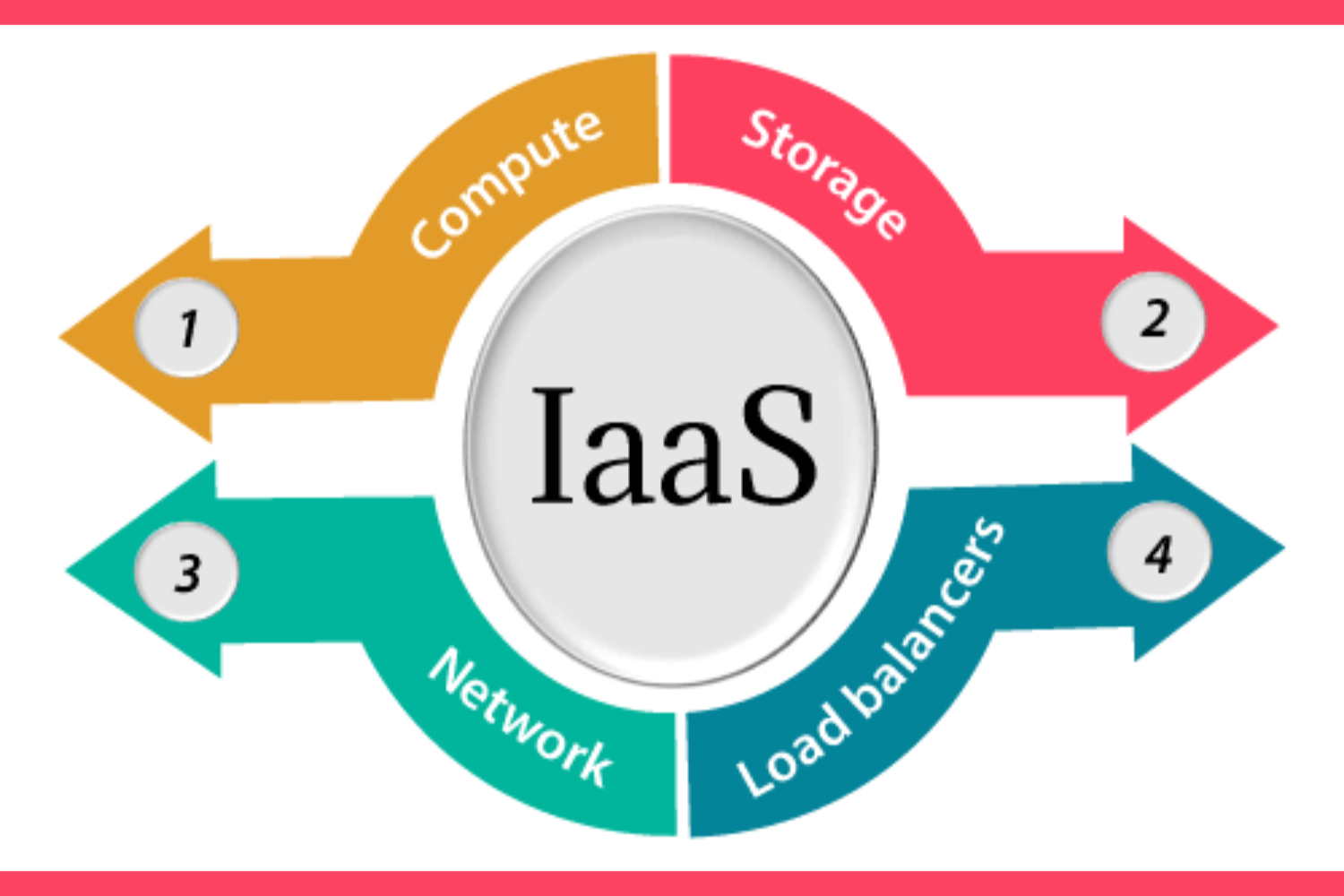
AWS IaaS
Infrastructure as a Service (IaaS): Building the Foundation for Digital Success
In the dynamic landscape of the digital age, businesses are constantly seeking innovative solutions to streamline operations, enhance scalability, and boost overall efficiency. Infrastructure as a Service (IaaS) has emerged as a pivotal component in this quest for digital transformation, providing a comprehensive and flexible framework for organizations to build, deploy, and manage their IT infrastructure.
What is IaaS?
IaaS is a cloud computing service model that delivers fundamental computing resources over the internet. It encompasses a range of essential infrastructure components, including virtualized computing power, storage, and networking resources. In essence, IaaS enables organizations to outsource the physical hardware and focus on utilizing virtualized resources on a pay-as-you-go basis.


Why is Infrastructure as a Service important?
IaaS allows you to scale your computing capacity while spending less on IT. In the past, businesses bought and cared for their own computers in an on-site data center. However, in order to manage sporadic heavy workloads, this frequently required a significant upfront investment. For instance, during the holidays, an e-commerce business receives three times as much application traffic. They need to buy more server machines to handle this traffic, but those machines sit idle the rest of the year.
Cloud service providers such as AWS keep a lot of hardware in highly secure data centers to get around this problem. They charge you a per-use fee for access to this cloud computing infrastructure. To meet all of your business, legal, and compliance needs, you get practically limitless access to resources that are both flexible and secure.
Advantages of Infrastructure as a Service- (IaaS):
IaaS offers benefits to modern enterprises like the following:
Scalability: IaaS allows businesses to scale their infrastructure up or down based on demand, ensuring optimal resource utilization.
Cost Efficiency: With a pay-as-you-go model, organizations only pay for the resources they consume, eliminating the need for significant upfront investments.

Flexibility: IaaS provides the flexibility to choose the operating systems, applications, and development frameworks that best suit the organization’s requirements.
Reliability: Leading IaaS providers offer high levels of reliability, with data redundancy and disaster recovery mechanisms in place.
Focus on Core Competencies: By outsourcing infrastructure management, organizations can focus on their core competencies and strategic initiatives rather than the nitty-gritty of hardware maintenance.

What are the use cases of Infrastructure as a Service?
Cloud infrastructure can help you increase operational effectiveness and give solution delivery precedence over infrastructure management. You can enhance the customer experience by using fully managed, high-performing infrastructure, which is provided by an IaaS provider. Here are a few sample use cases for you to review.
Web Hosting:
Use Case: Small businesses or individuals can use IaaS to host their websites without the need to invest in physical servers. They can scale resources based on website traffic.
Development and Testing:
Use Case: Software development teams can utilize IaaS to quickly set up virtual environments for coding, testing, and quality assurance, optimizing resource utilization.
Backup and Storage:
Use Case: Organizations can use IaaS for secure and scalable storage solutions, ensuring reliable backup and easy access to data without the hassle of managing on-premises storage systems.
Disaster Recovery:
Use Case: Companies can implement IaaS to create backup environments in the cloud, providing a reliable and easily recoverable solution in case of unexpected data loss or system failures.
Scalable Computing Power:
Use Case: Businesses experiencing fluctuating workloads, such as seasonal demands, can leverage IaaS to scale up or down on computing resources as needed, optimizing costs.
Collaborative Projects:
Use Case: Teams working on collaborative projects can use IaaS to set up shared virtual environments, enabling seamless collaboration and resource-sharing across geographical locations.
These simple use cases highlight the practical applications of Infrastructure as a Service, demonstrating how it can address common business needs, enhance flexibility, and reduce the complexities associated with managing physical infrastructure.
How does Infrastructure as a Service work?
Virtualization is the foundation of IaaS operations. You can choose the kind and configuration of infrastructure you need with an IaaS platform. The underlying infrastructure is then automatically converted to digital format by the system. The behavior of these virtualized computer resources is similar to that of physical resources. Everything functions exactly as it would on a physical device for you and your apps.
In addition, IaaS providers provide extra services to help with infrastructure management. For instance, you can perform the following tasks using the services:

Examine system logs and keep an eye on efficiency
Apply uniform security protocols to all of your infrastructure.
Set up policies to automate routine infrastructure operations, such as load balancing and backups.

Types of Infrastructure as a Service resources:
Infrastructure as a Service (IaaS) resources typically include the following types in a simple context:
Compute Resources:
Description: Virtualized computing power that enables the execution of applications and processing tasks.
Example: Virtual Machines (VMs) with varying CPU and memory configurations.
Storage Resources:
Description: Virtualized storage solutions for storing data, files, and application resources.
Example: Scalable block storage or object storage, allowing organizations to expand or reduce storage capacity as needed.
Networking Resources:
Description: Virtualized network components that facilitate communication between different parts of the infrastructure.
Example: Virtual networks, subnets, and load balancers for efficient traffic distribution.
How are security and compliance responsibilities shared under the IaaS model?
IaaS providers are solely accountable for the security of the cloud application infrastructure they supply. They oversee all facets of security, including:
The data center’s physical security is ensured by employing security cameras, guards, and surveillance.
Infrastructure security achieved by regular upkeep of the provider’s infrastructure and access restrictions.
To meet all compliance requirements, data security should be implemented with extremely strict controls, encryption, and third-party auditing.
Implementation of IaaS:
Implementing Infrastructure as a Service (IaaS) involves several key steps to set up, configure, and manage virtualized resources in the cloud. Here’s a general guide on how to implement IaaS:
Define Your Requirements:
Clearly outline your organization’s requirements, including computing power, storage needs, networking configurations, and any specific security or compliance considerations.
Choose an IaaS Provider:
Select a reputable IaaS provider based on your requirements, budget, and the features offered. Popular IaaS providers include Amazon Web Services (AWS), Microsoft Azure, and Google Cloud Platform (GCP).
Configure Networking:
Set up virtual networks, subnets, and other networking components based on your requirements. Define security groups, firewall rules, and load balancers as needed.
Manage Storage:
Set up storage resources, such as block storage for VMs, object storage for scalable data storage, and file storage for file-sharing. Define backup and recovery strategies to ensure data resilience.
Implement Monitoring and Management Tools:
Utilize monitoring tools provided by the IaaS platform to track resource utilization, performance metrics, and potential issues. Implement automation and management tools to streamline operations.
Backup and Disaster Recovery:
Set up automated backup solutions and implement disaster recovery plans to ensure data integrity and availability.
Regularly Review and Optimize:
Periodically review your infrastructure, assess performance, and optimize resource utilization. Make adjustments based on changing business requirements.
Do you need IaaS?
Reducing capital expenditures and turning them into operating expenses is one of the main reasons companies select IaaS. They can use IaaS to get networking, storage, and computation without having to buy and maintain large, energy- and space-intensive private server rooms.
You may also find that IaaS is a cost-effective solution for supporting your operations if you have erratic workload volumes or a need to react quickly to changes in your company.
If any of the following apply to your company, IaaS is most likely a good fit for you:
Rapid expansion of businesses beyond the capacity of the infrastructure
Unpredictable increases in demand for services related to infrastructure
Low use of the resources already available in the infrastructure
Enormous amounts of data that overflow on-site data storage
On-premises application response times that are slow Capacity-related application performance limitations
Slow cycles of hardware refresh
More infrastructure agility and scalability are needed for these scenarios than traditional data centers can offer.
Course Highlights
1- Suited for students, fresher’s, professionals, and corporate employees
2- Live online classes
3- 4-month program
4- Certificate of completion
5- Decision Oriented Program of Analysis
6- Live Classes by highly experienced faculties
7- Hands-on experience with real-life case studies

Salary Expected
The salary for IAAS in AWS in India ranges between 13 lakhs to 35 lakh Per Annum
Conclusion:
Infrastructure as a Service (IaaS) has revolutionized the way organizations approach their IT needs. By providing a flexible, scalable, and cost-effective solution, IaaS empowers businesses to adapt to the ever-changing digital landscape and position themselves for sustained growth and success. As technology continues to evolve, IaaS will remain a cornerstone for organizations seeking a robust foundation for their digital endeavors.

